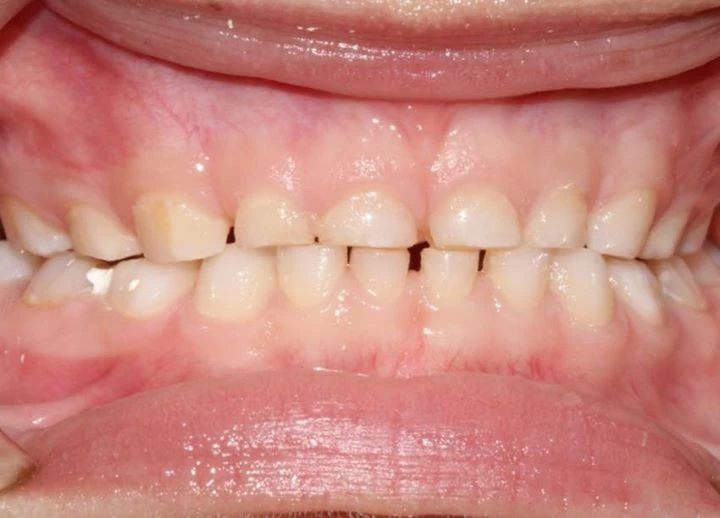Multidisciplinary Management of Bruxism
Bruxism affects the masticatory muscles and occlusion as tremendous forces transmit to teeth and surrounding tissues that may lead to teeth wear, hypersensitivity and even looseness. The temporomandibular joint (TMJ) as well as the stomatognathic system is also affected by this habit leading to temporal headache and sleep apnea. The soft tissues exhibit indentation of the sides of the tongue, linea alba on the cheeks and gum recession.
Bruxism is excessive grinding of teeth that occur unconsciously. The majority of bruxism patients are nocturnal bruxists who develop this behavior when sleeping. It can be associated with neurological disorders or considered as an adverse effect of certain drugs. It causes alteration of the occlusal morphology and flattened occlusal surfaces of teeth which may lead to fracture of crowns or prostheses.
The classical diagnostic features of bruxism are the presence of wear facets on the occlusal surfaces of teeth, especially the molars, and shifting from centric occlusion relationship. In more severe cases, patients may develop inflammation of periodontal ligaments, mobility of teeth, limited mouth opening, parafunctional habits, tenderness/fatigue of masticatory and masseter muscles and loud noise during sleep resulting from teeth grinding.
Management of bruxism requires accurately determining its causes and the complications that may associate each individual case. In many cases, a dentist must work jointly with a psychotherapy team along with pain-management specialists to stabilize psychosocial parameters, to conduct relaxation therapy and to relief patient’s pain.

A dentist can help a bruxist patient not only with appliance therapy or night guards but also with botox injection into masticatory muscles. Also, as bruxist patient needs some dietary counseling, it is essential herein that a dentist revises such a diet and give notes on the rate of citrus food, caffeine and tobacco consumption.
Bruxism can be due to local factors, such as premature dental filling, and thus a dentist in such a case has more responsibility to check the patient’s dentition/occlusion and the presence of any interference. Inspecting such abnormalities must be done while the masticatory muscles and the mandible are brought to relaxed position. Some enameloplasty can help a patient with premature inter-cuspation to relieve his pain and to stop the habit. In addition, occlusal splints, including the night guard, can be fabricated for patients to be worn at night. They work as guides to bring the mandible to a desired position where night clenching and muscles’ stretching are zero. The fabrication of splints can be done with a variety of materials and either chairside (in the dental office) or at a laboratory.
Other severe cases could involve fractured or cracked teeth which require restorative treatment. Sometimes, root canal therapy followed by crowns could be needed. Physical therapy and muscle relaxants can also help to relieve muscle pain and stiffness. Antidepressant drugs or tranquilizers can be prescribed to eliminate anxiety and to alleviate sleep arousal. Finally, other methods include electrogalvanic stimulation and equilibration in conjunction with orthodontic treatment.

